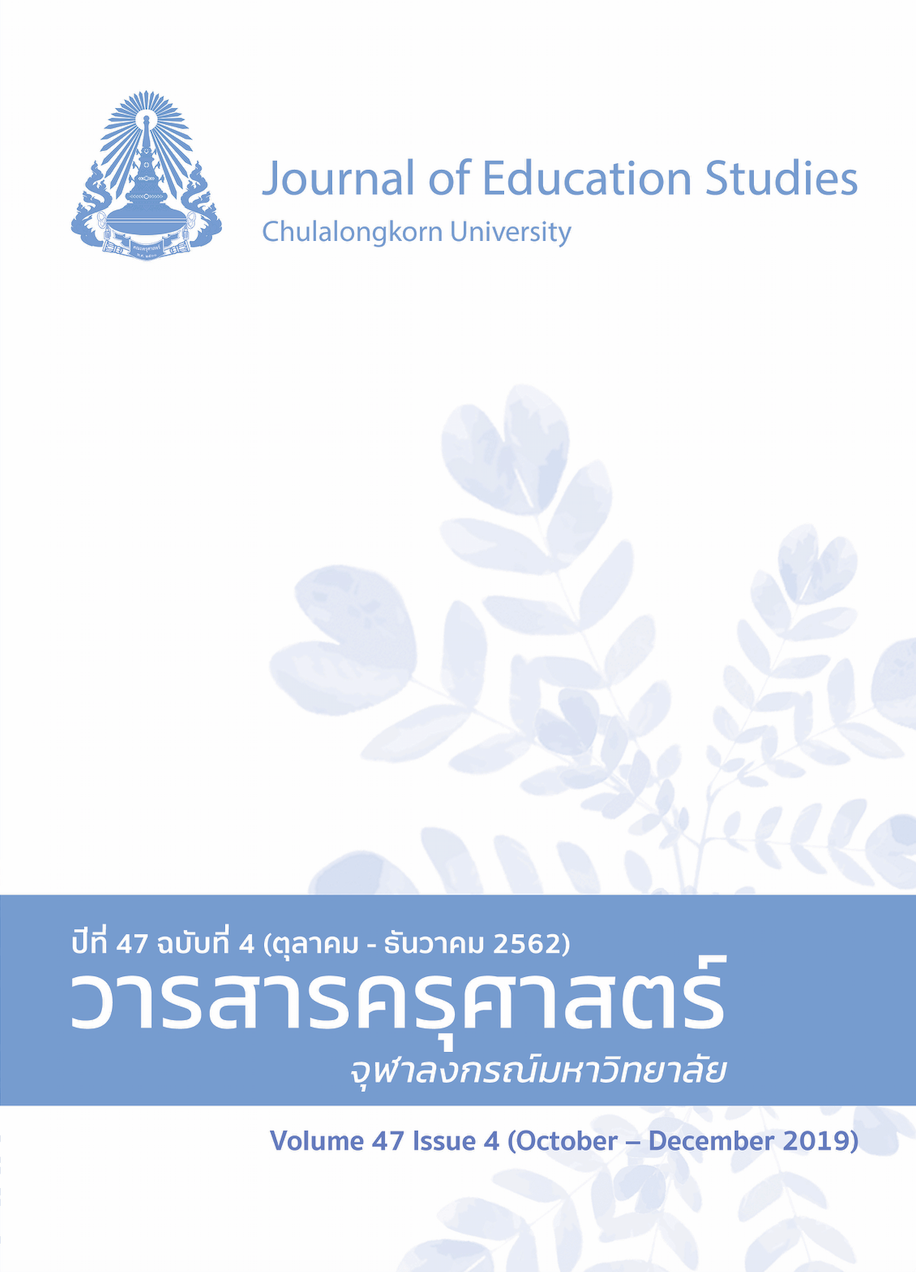Development of an Instructional Process Based on Authentic Learning and Systematic Thinking Approaches to Enhance the Mathematics Problem Solving Ability of Lower Secondary School Students
Keywords:
MATHEMATICS PROBLEM SOLVING ABILITY, AUTHENTIC LEARNING, SYSTEMATIC THINKINGAbstract
This research aimed to develop and study the effectiveness of an instructional process based on authentic learning and systematic thinking approaches to enhance the mathematics problem solving ability of lower secondary school students. This study consisted of research and development. The research can be divided into 2 phases; the first phase was the instructional development based on authentic learning and a systematic thinking approach, and the second phase was the instructional experiment. The sample group included 80 students in Matthayom 3 categorized into an experimental group and a control group, both with 40 students each. The tool for data collection was an evaluation form for mathematics problem solving ability set 1 and set 2. The results of the research were as follows: 1) The instructional process developement consisted of 6 steps: identifying problems or real-life situations, studying the data of a given situation or problem, executing and solving the problem using a group process, discussing and exchanging knowledge, setting a general conclusion style, and applying and expanding on the knowledge. 2) The experimental group demonstrated a greater mathematics problem solving ability than the control group at a 0.05 significance level.
References
ทิศนา แขมมณี. (2555). ศาสตร์การสอน: องค์ความรู้เพื่อการจัดกระบวนการเรียนรู้ที่มีประสิทธิภาพ. กรุงเทพมหานคร: สำนักพิมพ์แห่งจุฬาลงกรณ์มหาวิทยาลัย.
สถาบันทดสอบทางการศึกษาแห่งชาติ. (2561). ผลการสอบวัดคุณภาพระดับชาติ ปี 2560. สืบค้นจาก http://bet.obec.go.th/nt/(Country).html.
ภาษาอังกฤษ
Centre for Strategic Management, Architects in Strategic & Social Charge. (1999). Systems thinking and learning: Executive briefing and seminar. San Diego: Pleasantville Press.
Gardner, B. H., & Demello, S. (1993). System thinking in action. Health Care Forum Journal, 36(4), 25-28.
Kambiz, E. M. (2004). Links between systems thinking and complex decision making. System Dynamics Review, 20(1), 21-48.
Lombardi, M. M. (2007). Authentic learning for the 21st century: An overview. In D. G. Oblinger (Ed.), Educause learning initiative. Advancing learning through IT innovation (pp. 1-12). Louisville, CO: EDUCAUSE.
Lynn, C. (1993). Some factors that impede or enhance performance in mathematical problem solving. Journal for Research in Mathematics Education, 24(2), 167-171.
Morse, J. (1997). The assessment of authentic performances and products in a middle school classroom. Retrieved from https://elibrary.ru/item.asp?id=5537277
National Council of Teachers of Mathematics [NCTM]. (1989). “Curriculum and evaluation standards for school mathematics. Reston, VA: NCTM
Oers, B., & Wardekker, W. (1999). On becoming an authentic learner: Semiotic activity in the early grades. Journal of Curriculum Studies, 31(2), 229-249.
Ploya G. (1987). On learning, teaching, and learning teaching. In F.R. Curcio (Ed.), Teaching and learning: A problem solving focus. Reston, VA: NCTM
Reeves, T. C. (2002). How do you know they are learning?: The importance of alignment in higher education. International Journal of Learning Technology, 2(4), 302–304.
Rule, A. C. (2006). Editorial: The components of authentic learning. Journal of Authentic Learning, 3(1), 1-10.
Senge, P. M. (2006). The fifth discipline field book: The art & practice of learning organization. London: Random House Business.




